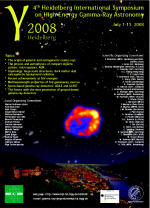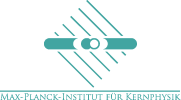Heidelberg
The name of Heidelberg does not only stand for the world-famous castle, for Germany's oldest university and for lanes steeped in history in the Old Town, but also for a modern scientific and economic location with an international reputation and a most lively and varied cultural scene. This attracts people from all over the world, some 3.5 million guests per year, 65 per cent of whom come for professional reasons.
Detailed Information on what to see and do is provided
by the
Heidelberg Marketing GmbH.
They also provide the Tourist Information
at the main train station:
Tourist Information am Hauptbahnhof
Willy-Brandt-Platz 1
69115 Heidelberg
Tel. +49 (0) 62 21-1 94 33
Fax +49 (0) 62 21-14 22 54
E-Mail:
touristinfo@heidelberg.de
An interactive map of Heidelberg can be found
here.
In the following we just provide a few suggestions.
Old Town:
The historic Old Town of Heidelberg stretches along the river Neckar and comprises many attractions including Germany's oldest university (including a student's prison), the Old Bridge, or the Heilig-Geist ("Holy Spirit") Church amongst many others. A map with detailed information on all the attractions can be found here.
Heidelberg Marketing GmbH regularly offers guided city tours.
Castle:
Heidelberg Castle is one of the most important German cultural monuments. As a residence of the Palatinate electors from the 13th to the 18th century, it experienced a magnificent and eventful history. Periods of expansion were followed by those of devastation. The palace buildings with the greatest artistic importance were built during the Renaissance. Since the 19th century Heidelberg has been famous all over the world for the romantic appearance of its castle ruins, which attract hundreds of thousands of visitors every year. The castle is easily accessible by the Bergbahn (funicular railway, see below), or by a short uphill walk.
Bergbahn:
Heidelberg's funicular railway covers the longest funicular railway distance in Germany (1,5 km) and actually consists of two consecutive railways. The lower funicular railway connecting the historic Old Town to the castle is the most modern funicular railway in Germany, the upper funicular railway continuing to the top of the Königstuhl is the oldest one, which still uses its historic cars.
Philosophenweg:
Walking up the Philosophenweg on the northern side of the river Neckar, just opposite the historic Old Town, will give you a magnificent view on the Old Town itself, the castle and the picturesque Neckar valley.
Castle Illumination:
For those staying on the weekend after the conference: On July 12 at 22:15 the "Schlossbeleuchtung" (Castle Illumination) takes place (public fireworks). More details can be found here .
Surroundings
Heidelberg is surrounded by a variety of interesting places ranging from historic towns like Speyer or Ladenburg, museums such as the famous technology museums in Speyer and Sinnsheim to remote castles. The region also offers outdoor activities in the Odenwald mountains. Detailed information on possible excursions can be found on the pages of Heidelberg Marketing GmbH .
Speyer:
Over 2000 years of history and the famous cathedral of Speyer: Speyer's magnificent Romanesque imperial cathedral is the town's famous landmark, visibile for miles around. Built by the emperors as their choice of final resting place, it symbolises their enormous power. The cathedral was not dedicated until 1061, although building work began under the Salian Emperor Konrad II around 1030. One of the largest and most important Romanesque buildings in Germany, Speyer's cathedral is laid out in the form of a Latin cross and is where the Salians emperors chose to be entombed. The cathedral is a UNESCO-World Heritage site.
Speyer is in addition home of the Technik Museum Speyer that offers more than 2,000 exhibits, including 70 aircraft and helicopters, 50 vintage cars, 40 fire engines, 20 locomotives and many more. The highlights are a Boeing 747, the houseboat Sean O'Kelley and the submarine U9 with walk-in facilities.
Speyer can easily be reached by local trains with the number "S3" and "S4" from Heidelberg's main train station (approximately 45 minutes). Further information on Speyer can be found here.
Schwetzingen:
Schwetzingen castle was the summer residence of the Palatinate Electors Karl Philipp and Carl Theodor, the "Palatinate Versailles". The palace was built from 1698. The palace gardens have an area of 72 ha and are inspired by both French and English gardens. Schwetzingen Castle comprises varied architectural elements, including the luxurious bathhouses of the Electors and the mosque. To get to Schwetzingen, take tram no. 22 from Bismarckplatz to Eppelheim (20 minutes) and change at Eppelheim to bus no. 713 to Schwetzingen (10 minutes). Detailed timetables can be obtained from the transport network VRN.
Ladenburg:
Ladenburg is one of the oldest Roman towns in Germany with a picturesque Old Town. It was the hometown of Carl Benz, who invented the automobile. A museum shows the history of automobiles and the life of Carl Benz. Ladenburg is connected to Heidelberg by local trains (direction: Frankfurt) from the main train station (15 minutes). Detailed timetables are availabe from Deutsche Bahn.






